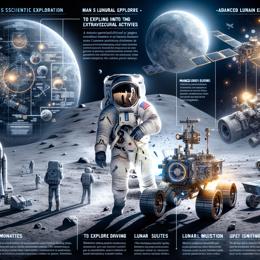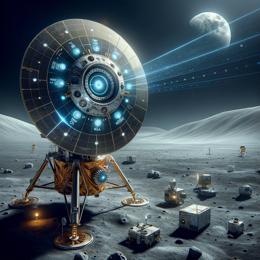Image created by AI
US and South Korea Strengthen Ties with Aerospace Cooperation Agreement
In an era marked by rapid advancements in space exploration and science, the United States and the Republic of Korea have committed to an enhanced partnership in aerospace activities. The recent agreement between NASA and the newly established Korea AeroSpace Administration (KASA) serves as an embodiment of their pledge to push the boundaries of human knowledge and technology.
The pivotal signing of a joint statement of intent was held at NASA Headquarters in Washington, D.C., and signifies a turning point for collaborative endeavors between the two countries in space. NASA Administrator Bill Nelson hailed the agreement as an elevation of the already fruitful partnership, expressing eagerness for the breakthroughs and innovations to emerge from this collaboration.
The scope of the cooperation is extensive, with discussions involving NASA's ambitious Moon to Mars Architecture and potential Korean contributions to lunar surface science. The partnership will also explore space life sciences and medical operations, further utilize Korea's deep space antenna, and delve into commercial low Earth orbit activities, among other scientific areas such as heliophysics.
A focal point of the joint statement is the acknowledgments of the shared commitment to the Artemis Accords, with South Korea recognized as one of the early signatories. The Artemis Accords, established by NASA alongside the U.S. Department of State and other foundation member nations, convey a collective pledge to uphold principles such as the public release of scientific data and practices that embody responsible and sustainable space exploration.
KASA Administrator Youngbin Yoon underscored the strategic significance of this accord, seeing it as an avenue for South Korea to assert itself as a robust participant in space affairs and to foster human advancement through scientific and exploratory pursuits. The sentiment is that this step is not just bilateral but one that underscores global cooperation for a sustainable space presence.
The ceremonious event was attended by dignitaries from KARI and KASI, both of which have historically cooperated with NASA. This includes sharing data pertinent to the Korea Pathfinder Lunar Orbiter project and utilizing NASA's Deep Space Network capabilities.
Moreover, the synergy between US and South Korean technological endeavors has led to the development and placement of satellites that monitor atmospheric pollution. Pioneering initiatives such as NASA's TEMPO mission and KARI's GEMS project stand as testament to the global benefits derived from such international cooperation, emphasizing the resolve to address pressing environmental challenges through space-based observations.
This commitment between the US and South Korea is a testament to the increasingly interconnected future of space flight and exploration, with collaborative efforts symbolizing a collective journey towards uncovering the cosmos' most profound secrets and enhancing life on our home planet.










